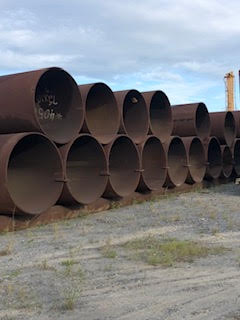
Daily Energy/Automotive News; Oil Prices Continues to Rise
London, 20 February 2024, (Oilandgaspress): – At a high-level event at the IEA’s headquarters in Paris, energy and climate leaders from around the world today addressed the next steps that governments need to take to deliver on the important energy commitments made at the recent COP28 climate summit in Dubai and ensure that the door remains open to limiting global warming to 1.5 °C. Read full article

Michael Bradshaw, Professor of Global Energy at Warwick Business School, said:
“Europe has been incredibly fortunate to have avoided a major physical shortage of natural gas.
“There have been a number of factors in Europe’s favour: two relatively mild winters; a period of reduced gas demand in Asia; sufficient gas infrastructure in Europe to import and store natural gas; and perhaps, most importantly, a well-functioning global LNG market that brought about a significant rebalancing of global gas flows in a short period of time.
“Of course, that same market dictated that consumers pay record high prices and others were also squeezed out of the markets. Those trading LNG saw record profits and governments had to use huge sums of money to support consumers.
“Europe’s gas crisis has been a case of states and markets working together to enable a pivot away from Russian pipeline gas.
“The question is, what happens next? The LNG is still tight and significant new supplies will not be able in time for next winter. Thereafter, new supplies should balance the market.
“Prices have fallen, but they are still above long-run pre-crisis levels. The market remains unbalanced and price spikes remain a possibility.
“Europe has decided that, when it comes to the energy transition, gas is not part of the solution. It is part of the problem.
“Elsewhere, countries that are not currently major importers of LNG may think twice and those that are may be reconsidering their options.
“Thus, there is significant uncertainty about the role of natural gas in the transition to net-zero, as reflected in the IEA’s energy scenarios.
“Europe’s gas crisis may prove to be the last bonanza for the LNG industry.” Read full article
What role will gas play in the energy transition?
The LNG industry argues that natural gas is a cleaner fuel than coal, producing about half the emissions when burned to generate electricity. If countries meet future energy demand with gas instead of coal, emissions will fall. However, other analyses highlight the methane that leaks from pipelines and suggest that gas may actually be worse for the climate than coal.
Even if the industry were to address these so-called fugitive emissions, gas-fired power would still warm the planet and countries transitioning to natural gas now will be locked into using it for decades to come, remaining exposed to unexpected changes in its price.
The solution is to leapfrog from coal to renewables and avoid gas as a transition fuel. If this happens, the LNG industry could be building production capacity for which there is no market. Of course, industry analysts predict that demand will continue to grow.
The review may compel future export projects to clamp down on methane leaks or impose a ban on new projects, although that seems unlikely. Its outcome may simply be swept away by a new president. But as the world has promised to transition away from fossil fuels, questioning the logic of expanding US LNG exports is a good place to start. . Read full article

Australia, Kazakhstan, and Canada have the largest shares of available uranium resources—accounting for more than 50% of total global reserves.
But within these three, Australia is the clear standout, with more than 1.7 million tonnes of uranium discovered (28% of the world’s reserves) currently. Its Olympic Dam mine, located about 600 kilometers north of Adelaide, is the the largest single deposit of uranium in the world—and also, interestingly, the fourth largest copper deposit.
Despite this, Australia is only the fourth biggest uranium producer currently, and ranks fifth for all-time uranium production. Outside the top three, Russia and Namibia both have roughly the same amount of uranium reserves: about 8% each, which works out to roughly 470,000 tonnes.
South Africa, Brazil, and Niger all have 5% each of the world’s total deposits as well.
China completes the top 10, with a 3% share of uranium reserves, or about 224,000 tonnes. Read full article
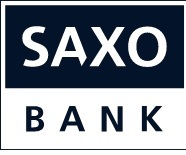
Saxo’s Ole Hansen: WTI crude eyes key resistance
Having spent the past three months rangebound within a 12-dollar range around $74/b, WTI crude oil is once again challenging key resistance in the $80 area. Brent, similarly, confined around $79, faces a steeper climb to its $85 resistance level. During this time prices of both have struggled to gain momentum with geopolitical concerns and OPEC+ production cuts offsetting demand concerns, not least in China, the world’s top importer of crude.
This month has, however, seen a strong rebound, initially supported by fuel market tightness leading to higher refinery margins, or so-called crack spreads. Not least diesel prices which found support after global stock levels fell below their seasonal averages, supported by refinery disruptions in Russia amid Ukraine drone strikes, and not least continued attacks by Houthi on shipping in the Red Sea and the Gulf of Aden. The latter have led to the re-routing of east-west tankers from the Red Sea and the Suez Canal to the much longer route around Africa, in the process tying up millions of barrels of diesel and gasoil on the water for longer.
While some of that support has faded with crack spreads easing, crude oil has nevertheless managed to maintain a bid amid continued Red Sea worries and signs the crude market has started to tighten up. The alternating market focus seen in recent months helped create a very difficult trading environment with directional bets by speculators failing on several occasions, forcing trading positions, both long and short, to be adjusted on a regular basis, thereby triggering moves that found little fundamental justification.
However, in the latest reporting week to February 13, money managers showed an increased belief in higher prices, not least in Brent, the global benchmark, after they boosted their outright long positions to the highest level since October 2021 while the net position reached an 11-month high at 276k contracts or 276 million barrels. Positioning in WTI remains relatively weak with a net long at 116k contracts, some 44k contracts above a five-year low reached just before the Red Sea crisis began in early December. The price difference between monthly contracts has been widening, indicating a more robust outlook across parts of the physical market. The three-month spreads shown above for WTI and Brent have both widened to around a $2 per barrel backwardation, highest since October, and up from a -$0.5 per barrel contango at the start of the year. In the short term, focus remains on the Red Sea where Houthi attacks continue while a Qatar attempt to broker ceasefire deal between Israel and Hamas has so far been fruitless. In addition, ahead of the OPEC+ meeting in early March, the group’s effort to trim output seems to be successful. Read full article
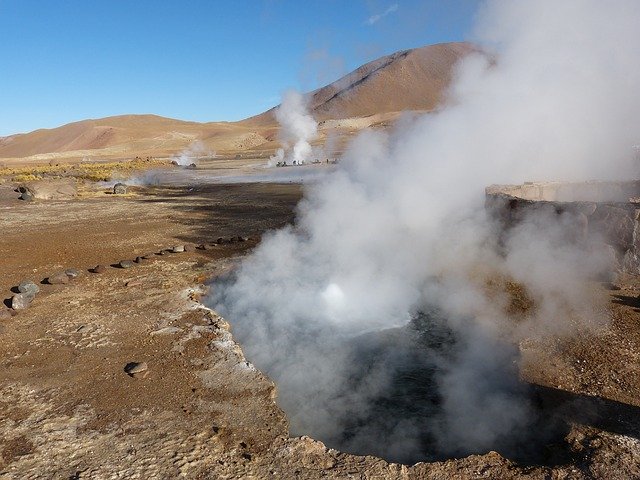
Geothermal is a dream source of clean energy in many ways; the hot rocks under our feet hold more energy than humanity could use in a million years… Although just to be clear, that’s not a challenge… I’m looking at you, OpenAI and Bitcoin miners. Bring it up to the surface, and you can directly use the heat, or harvest electrical energy from it. The energy’s there 24/7, unlike solar and wind, the infrastructure costs aren’t terrible, and it’s available right underneath us, anywhere on the planet. And yet, it represents less than 1% of global energy production, because while there are hot rocks somewhere under your feet wherever you’re standing, they’re much easier to get to in some places, where they’re closer to the surface, than in others, where they’re buried so deep they’re virtually impossible to get to economically. Well, at least until the particle beam drills are ready.
What’s more, geothermal exploration drilling is relatively expensive, and not always successful. So companies have tended to stick to areas they’re relatively sure will deliver – like the Indo-Pacific “Ring of Fire,” a tectonic belt that runs all the way up the West coast of the Americas, across to the Eastern tip of Russia, down through East Asia and across to cover New Zealand. Essentially, where there are volcanoes, the geothermal industry is getting better at developing them as energy resources. Read full article
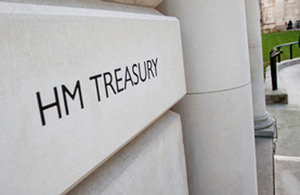
HMRC has backtracked on plans to charge drivers of four-door pickups thousands more in car tax after backlash. On Monday 12 February 2024 HMRC updated its guidance on the tax treatment of Double Cab Pick Ups (DCPUs), following a 2020 Court of Appeal judgment. The guidance had confirmed that, from 1 July 2024, DCPUs with a payload of one tonne or more would be treated as cars rather than goods vehicles for both capital allowances and benefit-in-kind purposes.
Since then, the government has listened carefully to views from farmers and the motoring industry on the potential impacts of the change in tax-treatment. The government has acknowledged that the 2020 court decision and resultant guidance update could have an impact on businesses and individuals in a way that is not consistent with the government’s wider aims to support businesses, including vital motoring and farming industries.
HMRC have today announced that its existing guidance will be withdrawn, meaning that DCPUs will continue to be treated as goods vehicles rather than cars, and businesses and individuals can continue to benefit from its historic tax treatment.
This move is resultant of the government making clear that it will be legislating to ensure that DCPU vehicles continue to be treated as goods vehicles for tax purposes.
The government will consult on the draft legislation to ensure that it achieves that outcome before introducing it in the next available Finance Bill. Read full article

KBR, Inc. (NYSE: KBR) today announced its fourth quarter and fiscal 2023 financial results and issued its fiscal 2024 financial guidance.
Financial Highlights for the Year Ended December 29, 2023
Revenue of $7.0 billion, up 6% (organic) on a year-over-year basis and 11% on an (organic) ex-OAW2 year-over-year-basis
Net income attributable to KBR of $(265) million; Adjusted EBITDA2 of $747 million (10.7% Adjusted EBITDA2 margin)
Diluted EPS of $(1.96); Adjusted EPS2 of $2.91
Operating cash flows of $331 million; Adjusted operating cash flows2 of $463 million
Bookings and options of $10.5 billion during the year to date period with 1.1x TTM book-to-bill1
“The KBR team has shown their unwavering commitment and exceptional skills, leading to a remarkable performance this fiscal year,” said Stuart Bradie, KBR president and CEO. “We achieved an industry leading safety record, met or exceeded our key financial metrics and delivered a 10% increase in backlog and options in 2023, a testament to our Team of Teams’ ability to deliver results while ensuring the well-being of all involved.”
“Furthermore, we successfully settled the remaining convertible notes and related warrants in cash, avoiding dilution. We more recently extended the maturity of our term loans and revolving credit facility, fortifying our balance sheet and fueling capital deployment optionality for 2024 and beyond.”
“Lastly, we have a more defined path forward on HomeSafe and together with our customer remain unwavering in our commitment to harness our collective expertise and focus on innovation, with the aim of providing an unparalleled and more sustainable moving experience for military personnel and their families.”
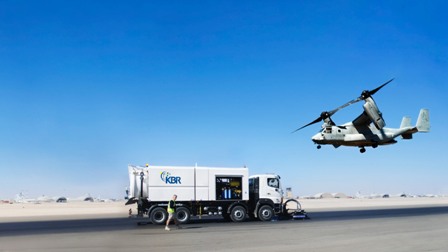
New Business Awards
Backlog and options as of December 29, 2023 totaled $21.7 billion. Delivered 1.1x trailing-twelve-months (TTM) book-to-bill1 as of December 29, 2023. Awarded $1.7 billion of bookings and options in the quarter, bringing fiscal 2023 bookings and options to $10.5 billion.
Sustainable Technology Solutions (STS) delivered 1.1x TTM book-to-bill1 as of December 29, 2023, including awards and achievements in the quarter as follows:
Awarded a Front-End Engineering Design contract by Fidelis New Energy for Project Fyrkat, one of the first onshore liquid carbon dioxide sequestration facilities, located at a receiving terminal at the Port of Aalborg, Denmark.
KBR’s Purifier™ ammonia technology selected by PT Pupuk Sriwidjaja Palembang, a subsidiary of PT Pupuk Indonesia, for a planned ammonia plant to be built in South Sumatera Province, Indonesia. This will be KBR’s 12th ammonia plant licensed to Pupuk Indonesia.
KBR’s K-GreeN® technology selected by a consortium consisting of Lotte Chemical, Korea National Oil Corp and Samsung Engineering for Lotte Chemical’s H2biscus green ammonia project that will produce 800 KTA of green ammonia from hydropower in Sarawak, Malaysia.
KBR’s market-leading low-carbon blue ammonia technology selected by Tokyo-based INPEX Corporation and Oklahoma City-based LSB Industries for a 1.1 million tonnes per annum ammonia production and export project in the US Gulf Coast.
Extended collaboration with ISU Chemical through a memorandum of understanding. Under the terms, KBR will provide licensing, proprietary engineering design, proprietary equipment and catalyst for the planned 10 MTPD hydrogen production unit, employing KBR’s innovative technology, H2ACT℠, which has rapidly emerged as the industry’s leading ammonia cracking technology. Read More

DS Automobiles is becoming the first manufacturer in the world to include ChatGPT as standard on its models fitted with DS IRIS SYSTEM.
Launched in October 2023, the pilot phase of deploying the ChatGPT service in DS IRIS SYSTEM infotainment system was a great success by making it possible to enjoy generative artificial intelligence coupled with DS speech recognition.
Driven by the success of this test phase, during which the use of speech recognition increased by more than 50%, DS Automobiles will offer ChatGPT as standard.
Across the entire range, the DS 3, DS 4, DS 7 and DS 9 equipped with DS IRIS SYSTEM, delivered from March, will integrate this feature in eighteen countries and in thirteen languages, in countries already covered by standard speech recognition. Read More
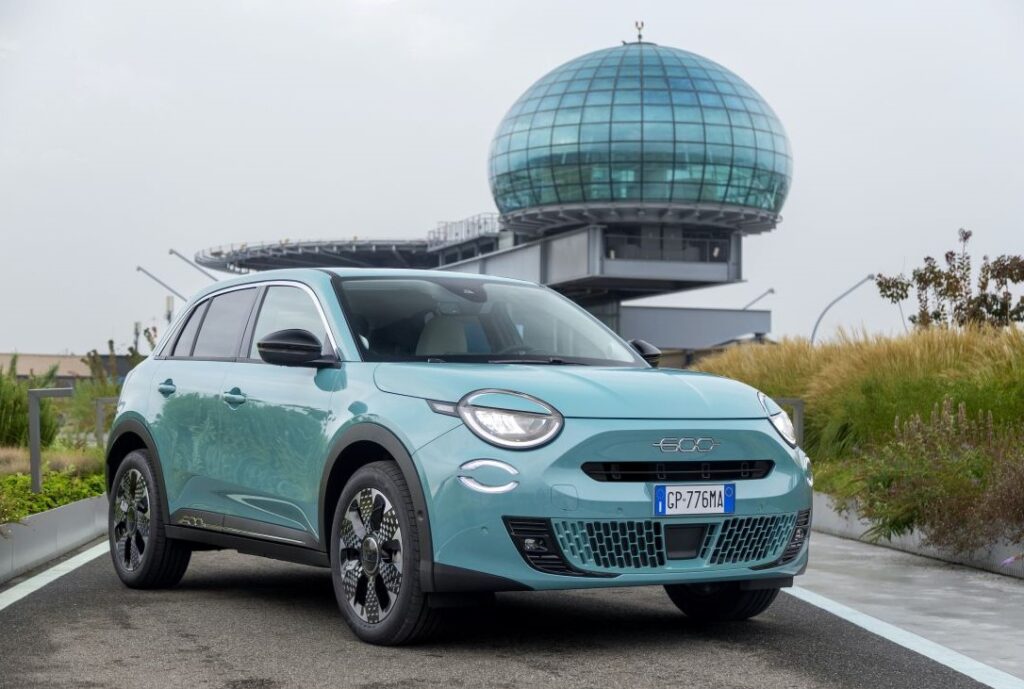
FIAT continues growing by 12% globally and confirms being first Stellantis Brand in volume and leader in Italy, Brazil, Turkey, and Algeria. FIAT in 2023 has increased its global sales volume of 12%, registering a total of 1.35 million units sold worldwide confirming being the first brand of Stellantis in terms of sales volume. Its global leadership is highlighted by the significant results in Europe, South America, and Middle East and Africa. The brand in fact is leading in its four “domestic markets” with a share of 21.8% in Brazil, 12.8% in Italy, 15.7% in Turkey and 78.6% in Algeria with different nameplates at the top, respectively: Fiat Strada in Brazil, Panda in Italy, Tipo in Turkey and Algeria. FIAT Professional was market leader in commercial vehicles, with 51,000 registrations amounting to a market share of 26.1% in 2023. Specifically, the Fiat Ducato, Doblò and Fiorino ranked first in their respective segment, while the Scudo was second with a growth of 2,9% compared to the previous year. In addition to that, the Fiat Professional Ducato, made in Atessa (Italy), was the best seller in its home country with over 21,900 registrations and a market share of 29.4% (+ 10% compared to 2022).
Rest of Europe. In 2023 FIAT grew in France with almost 60,000 units registered (up +7.2% on 2022), among which 33,000 were Fiat and Abarth 500, of which 24,000 in their electric versions.
In Germany, 500e is the best seller in the BEV A+B segment and FIAT Professional registered a 40% growth in volume and +1,3 pt. market share.
The 500e also dominated in Spain, gaining the title of best-selling electric urban vehicle in the A+B segment, while the Fiat 500 was the best-selling urban vehicle in A segment for the seventh year in a row. Lastly, in Spain, FIAT Professional registered a sales growth of 28%. Read More
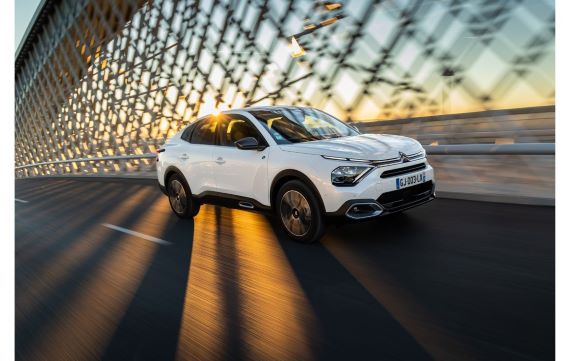
A forerunner in electric vehicles within the C segment, alongside efficient petrol and Diesel engines, Citroën introduces the Hybrid 136 on the C4 and C4 X models. This hybridization allows for combining the benefits of petrol and electric power. Built on the compact and lightweight 48V Hybrid technology, it consists of a 48V battery that recharges during certain driving phases, a 136 hp (100 kW) 3-cylinder petrol engine of new generation specifically designed to adapt to this hybrid system, coupled with the new electrified ë-DCS6 dual-clutch gearbox incorporating a 21 kW electric motor ë-Motor produced in France.
Simple and smooth in its operation, without the need for recharging, the Hybrid 136 offers comfort and versatility while reducing its emissions and consumption by nearly 20% compared to an equivalent petrol version. Capable of completing up to 50% of urban journeys in electric mode, emission-free, it thus presents all the benefits of electric driving, from ease of use to the ability to drive in low-emission zones, to reducing taxes imposed on petrol models in certain countries. With the Hybrid 136, C4 and C4 X offer a particularly homogeneous and attractive synthesis, emphasizing simplicity and serenity on board. This Hybrid 136 version is available starting from €33,200 for the C4 and €33,900 for the C4 X.
REDUCING FUEL CONSUMPTION WHILE INCREASING COMFORT AND CONVENIENCE
With this new hybrid powertrain, Citroën offers a new electrified alternative that provides the comfort of purely electric driving, fuel savings, and reduced CO2 emissions, all while managing costs effectively. Read More
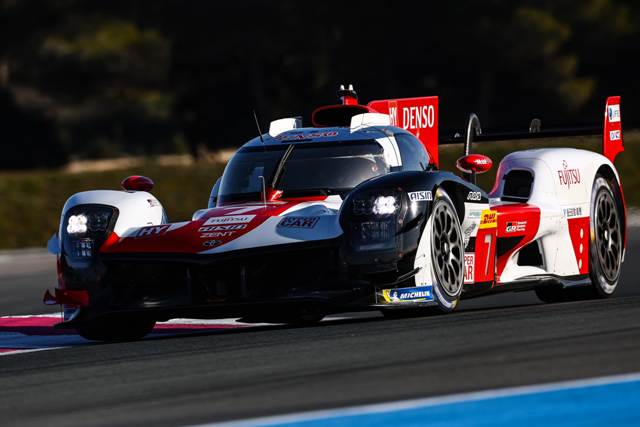
TOYOTA GAZOO Racing is renewed and ready to defend its FIA World Endurance Championship (WEC) titles against the biggest-ever grid of Hypercar competition when the 2024 season begins in Qatar on 2 March. After seeing off challenges from Cadillac, Ferrari, Peugeot and Porsche last season on its way to a fifth consecutive world title double, TOYOTA GAZOO Racing joins a field of 19 Hypercars this season, including newcomers Alpine, BMW, Isotta Fraschini and Lamborghini.
An experienced and proven line-up will be in the driving seat. In the #7 GR010 HYBRID, Mike Conway, 10 years on from his debut with the team, races alongside Team Principal Kamui Kobayashi and newcomer Nyck de Vries, a former TOYOTA GAZOO Racing Test and Reserve driver.. Read More

Oil and Gas News Undiluted !!! �The squeaky wheel gets the oil�
OilandGasPress Energy Newsbites and Analysis Roundup | Compiled by: OGP Staff, Segun Cole @oilandgaspress.
Disclaimer: News articles reported on OilAndGasPress are a reflection of what is published in the media. OilAndGasPress is not in a position to verify the accuracy of daily news articles. The materials provided are for informational and educational purposes only and are not intended to provide tax, legal, or investment advice.
Information posted is accurate at the time of posting, but may be superseded by subsequent press releases
Please email us your industry related news for publication info@OilAndGasPress.com
Follow us: @OilAndGasPress on Twitter |
Oil and gas press covers, Energy Monitor, Climate, Renewable, Wind, Biomass, Sustainability, Oil Price, LPG, Solar, Marine, Aviation, Fuel, Hydrogen, Electric ,EV, Gas,

